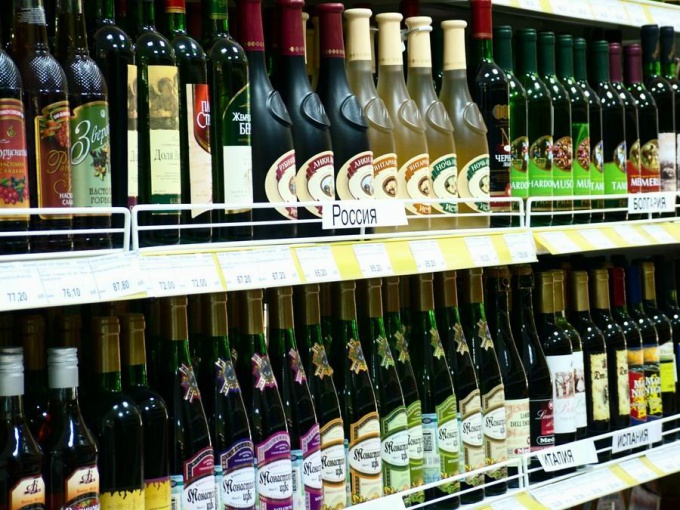Instruction
1
For all types of wine are divided, according to the adopted in France, the pan-European classification. According to her wines are divided into two fundamental groups: sparkling (containing dissolved carbon dioxide, which is formed in wine by natural fermentation and not deleted on purpose) and quiet (not containing carbon dioxide). The group of wines breaks for a further three sub-groups: natural, liqueur and flavored. Natural still wines are simple wines that are obtained in a natural way: fermentation of grape juice with yeasts that convert the sugar into alcohol. The fortress of wines varies from 8 to 15 degrees. All table wines are of this type. On the basis of the quiet natural make liqueur (fortified) wines and flavored. Fortress liqueur - 15-20 degrees. Achieve this by adding in a quiet natural wine of strong alcoholic beverages, most often brandy. To the liqueur wines are Madeira, sherry, port, Marsala. Flavored wines are produced by adding in a quiet natural spices, herbs, and spices and a bit of grape alcohol. The most famous flavored wine – vermouth.The most famous sparkling wine – champagne.
2
Each wine has its own style, implying two things: the color of wine (white, rose, red) and its degree of sweetness (dry, semidry, semisweet, sweet).White wine is obtained from grapes of any variety. The most important is the way it is processed. When processing white wine, pressed juice of the grapes is filtered and wanders without the pulp (skin). The color of white wine varies from cognac to light straw.Wine with a reddish-brown called red. Its color ranges from dark-ruby to pale scarlet. Produces red wines from red grapes and pressed the juice ferments with the skins.Pink wines are made from red grape "white". The must ferments together with the pulp only a few hours, and then the pulp is removed. The color of rosé wines vary from pale red to pinkish pale.Most natural wines – dry. All the sugar contained in them "dry" vybrazhivaet in alcohol. There are natural sweet or semi-dry wine in which the sugar remains – due to the natural characteristics of the grapes. But, unfortunately, these wines are very rare and expensive. Most semi-dry and semi-sweet wines made with use of artificial braking of fermentation.
3
The composition of Europe divides the wine in a blended (mixture of different grape varieties) and Severnye (varietal, made from a single grape variety). If the wine named for the grape variety, such as Cabernet or Merlot, so it's varietal, or Severnoe. Buying Severnoe wine, know what to expect from him, based on the characteristics of grape varieties. It must be borne in mind that not every variety of grapes is an harmonious wine.Interestingly, from a mixture of coarse, disharmonious wines can be amazing fragrant product with excellent taste. The label on the back of the bottle you can read, what grape varieties are used to produce a blend.
4
The aging wines are divided into young and Mature. The beginning of the exposure period is considered to be 1 January of the year following the harvest. Young wines sell out before this date. Ordinary wine without aging) implemented from 1 January of the year following the harvest. Mature – these are wines that are aged at least six months. Wines made from premium grapes and aged in barrels for at least 18 months, called vintage. The best examples of these wines fall into the category of collector's who are eligible additional exposure for at least three years.This classification is not quite perfect as to the wines without the extracts can be ranked and low-grade, ordinary wine, and upscale, just not in need of long aging.
5
For the same European classification wines are classified by place of origin. Buying a bottle of wine in the store, read the label.If the place of origin of the wine not specified wine of an inferior quality, which, according to European standards, called table wine. For us this is the usual natural wine. Europe is synonymous with low-grade, cheap beer, a bottle of which is not more than one or two dollars.When the place of origin indicated on the label (local wine), it means that the quality of such wines is much higher than table. In fact, indicating the place of origin of the drink on the label, the manufacturer must have a license, which confirms its compliance with the fault standard parameters for this region.If the label show the place of origin of the wine, which also gives you an idea of the type of drink – this means that you are guaranteed a wine of the highest quality. To assign a category, the wine must be made from strictly defined grape varieties, in accordance with the standards of cultivation adopted for a particular area. Such wines have an original bouquet and unique flavor, characteristic only for the given in the name of the drink areas.
